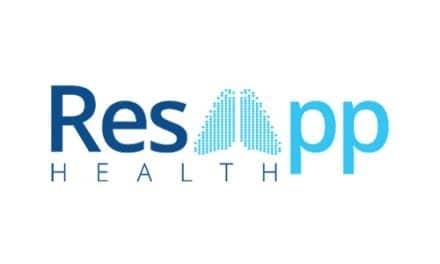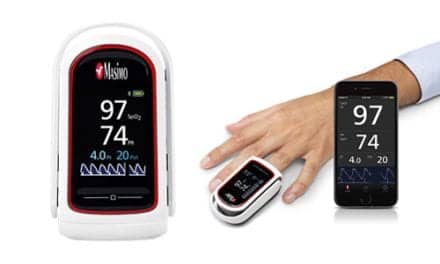Critical congenital heart defects (CCHD) affect an estimated 7,200 newborns each year, and pulse oximetry screenings are the first-line defense for detecting the disorder.
After an uneventful pregnancy, Annamarie Saarinen sat in the hospital with her newborn, Eve, when a pediatrician discovered a heart murmur. The new mother thought there was nothing to worry about, heart murmurs are common in newborns, and she was about to go home when the physician suggested further testing. “We did that and within an hour there was a pediatric cardiologist standing in the doorway of my hospital room saying my daughter was in heart failure,” she said.
She learned that her daughter has a critical congenital heart defect (CCHD), specifically a severe mitral valve defect. The condition was spotted in time to save her life, but not all newborn heart defects are identified in time. This is why, in recent years, pulse oximetry has been adopted in hospitals across the country as a first line of defense against these deadly congenital heart defects.
Expanding the Applications
Almost instantaneously, pulse oximetry devices can detect oxygen levels in the body, one of the most basic vital signs. They do this by shining a light through the skin, reflecting back the color of the blood, and detecting what percentage of red blood cells are saturated with oxygen. Oxygenated blood is more red while blood with low levels of oxygen has a bluish hue.
Respiratory therapists use pulse oximetry every day to give them an idea of real time oxygenation levels in their patients, but using this method to test newborns for CCHD is a relatively new practice in the United States. It’s come about only after years of advocating for state and federal mandates to implement the practice by physicians and organizations like the Newborn Foundation, a nonprofit cofounded by Saarinen after giving birth to her daughter in 2008.
Overall, pulse oximetry is a way to detect heart problems that might otherwise go unnoticed, and that if left untreated, could be fatal for newborns. “A lot of times it is called the invisible disease because these babies look like perfect babies,” said Lisa (Hom) Wandler, RN, clinical program manager for the critical congenital heart disease program at Children’s National Health System in Washington, DC.
“What makes pulse oximetry screening so impactful is that critical congenital heart disease is largely an invisible disease until the infant is in severe distress,” she said.
These critical cases require surgery or other procedures within the first year of life, according to the Centers for Disease Control and Prevention, so identifying these cases while the babies are still in the hospital is crucial.
One study, published in JAMA, conducted between 2007 and 2013 including approximately 27 million births in the United States, found that state implementation of a mandatory screening policy was associated with a decline of 33.4% in the CCHD death rate compared with states without similar policies. Another study, published in the BMJ medical journal, found that introducing pulse oximetry screening before discharge improved total detection rate of duct dependent circulation to 92%.2
From Recommended to Required
In 2011, the US Department of Health and Human Services added CCHD to the list of conditions recommended to states for universal newborn screening. All 50 states now require pulse oximetry screening for all neonates, ensuring that nearly all the 4 million babies born in this country every year are screened, a substantial win for the medical community at large, said Alex Kemper, the chief of the division of Primary Care Pediatrics at Nationwide Children’s Hospital in Columbus, Ohio.
“This is a really important success story that we should all be proud of,” said Kemper. “There is no doubt that this is beneficial for the newborns that we care for. Without a doubt pulse oximetry screenings lead to better outcomes by identifying babies who have unrecognized serious problems.”
The American Academy of Pediatrics now recommends that babies are tested at or around 24 hours of age or just prior to discharge. It’s a practice that helps detect the about 1 in 110 babies born with congenital heart defects, conditions that could be missed during routine pregnancy ultrasound screenings. In July of 2018, Idaho became the last state to require the test for all babies born in the state.
Now that this screening is a widespread practice, providers should make sure to stay current on the most up-to-date guidelines in their state and familiarize themselves with the devices that are available. The California-based medical device manufacturer Masimo makes a pulse oximetry unit with the ability to accurately measure even during motion and low perfusion. Another device that is used to measure blood oxygen of neonatal patients, Medtronic’s Nellcor SpO2 Nonadhesive Sensors, can be secured to babies without adhesive, preventing skin irritation.
These pulse oximetry devices are used, typically on the newborn’s right hand. If the oxygen readings are 95% or higher and there is not more than a 3% difference between the right hand and the foot, than that child passes. The newborns are typically given three chances to take the test and if their oxygen levels ever fall below 80%, they are rushed for an immediate assessment, said Wandler.
“[Pulse oximetry] has a great sensitivity and specificity around determining whether or not that patient should be brought in for additional screening,” said Keith Morrison, a representative from Medtronic.
Ease of Use
Typically, the device is placed on the right hand and another sensor is placed on the foot. The infants should not be crying or asleep at the time of the screening because that can impact the accuracy of the test. It’s important to make sure that the infant is not wearing a blood pressure cuff while clinicians conduct the test. This could disrupt the reading, according to Wandler.
Certain types of lighting can also impact the test. “Florescent lighting or bilirubin light can impact the screen as well, based on the light emitter. If the infant is on bilirubin light or under florescent light, you want to make sure that you’re shielding the pulse oximetry device,” said Wandler.
The test results can also be disrupted if the clinician administering the test holds the device on while it is taking a reading. “You don’t want to hold it on with your hand because the sensor can pick up interference from your hand. Usually we suggest that they use an adhesive or whatever the pulse oximetry manufacturer recommends,” said Wandler.
Kemper suggests that to ensure that every child gets proper screening, nurseries should establish a protocol for testing and documentation. In a busy newborn nursery, it is easy for a baby to accidently be discharged without their oxygen levels being taken. “The key thing in terms of screening is to makes sure that all babies get screened, you don’t want to accidently miss a baby in the newborn nursery,” he said.
Additionally, providers should know that just because a pulse oximetry test comes back positive does not mean that the baby necessarily has a heart defect. There could be other factors at play, including severe infections that could otherwise go unnoticed. “When the screening test is positive, you need to figure out what is going on. Babies should not have low oxygen levels,” said Kemper.
Know Your State Guidelines
Every state has their own guidelines for screening, so providers should familiarize themselves with the requirements in their state. As more research comes out, the guidelines could continue to change, so it is imperative to keep track of what the most recent recommendations are.
It’s also worth noting that pulse oximetry screening is not a perfect test. There can be false negatives, but the test still narrows the pool of babies with CCHD who leave the hospital without a diagnosis, said Wandler.
A lot of times, if the defect is not detected prior to the child leaving the hospital, it can be very difficult to recognize the warning signs of a heart condition, symptoms can often go unnoticed or be characterized as normal. These include poor feeding and rapid breathing. Cyanosis, a bluish tinge of the skin, can also be present.
“Sometimes infants were coming into the pediatrician’s office with poor feeding and rapid breathing and in some cases the pediatrician wouldn’t recognize this as CCHD because the warning signs are fairly common among [healthy] infants,” said Wandler.
Prior to the implementation of pulse oximetry screening for newborns, hospitals were mostly relying on prenatal ultrasound to pick up heart defects, which only detects 40 to 60% of CCHD cases, according to Wandler.
“We were missing as many as 50% of CHD cases,” said Wandler. “What that means is that the infant was getting in trouble at home and was either coming in through the emergency room or into an outpatient cardiology visit, typically in distress or in heart failure. Some of these infants were not identified until autopsy, so we really needed a safety net.”
“I think the thing that is really exciting is that now that the recommendation exists, all babies get screened for critical congenital heart defects,” said Kemper. RT
Lisa Spear is associate editor of RT. For more information, contact [email protected].
References
- Abouk, R., Grosse, S., Ailes, E. and Oster, M. (2017). Association of US State Implementation of Newborn Screening Policies for Critical Congenital Heart Disease With Early Infant Cardiac Deaths. JAMA, 318(21), p.2111.
- de-Wahl Granelli, A., Wennergren, M., Sandberg, K., Mellander, M., Bejlum, C., Inganas, L., Eriksson, M., Segerdahl, N., Agren, A., Ekman-Joelsson, B., Sunnegardh, J., Verdicchio, M. and Ostman-Smith, I. (2009). Impact of pulse oximetry screening on the detection of duct dependent congenital heart disease: a Swedish prospective screening study in 39 821 newborns. BMJ, 338(jan08 2), pp.a3037-a3037.










